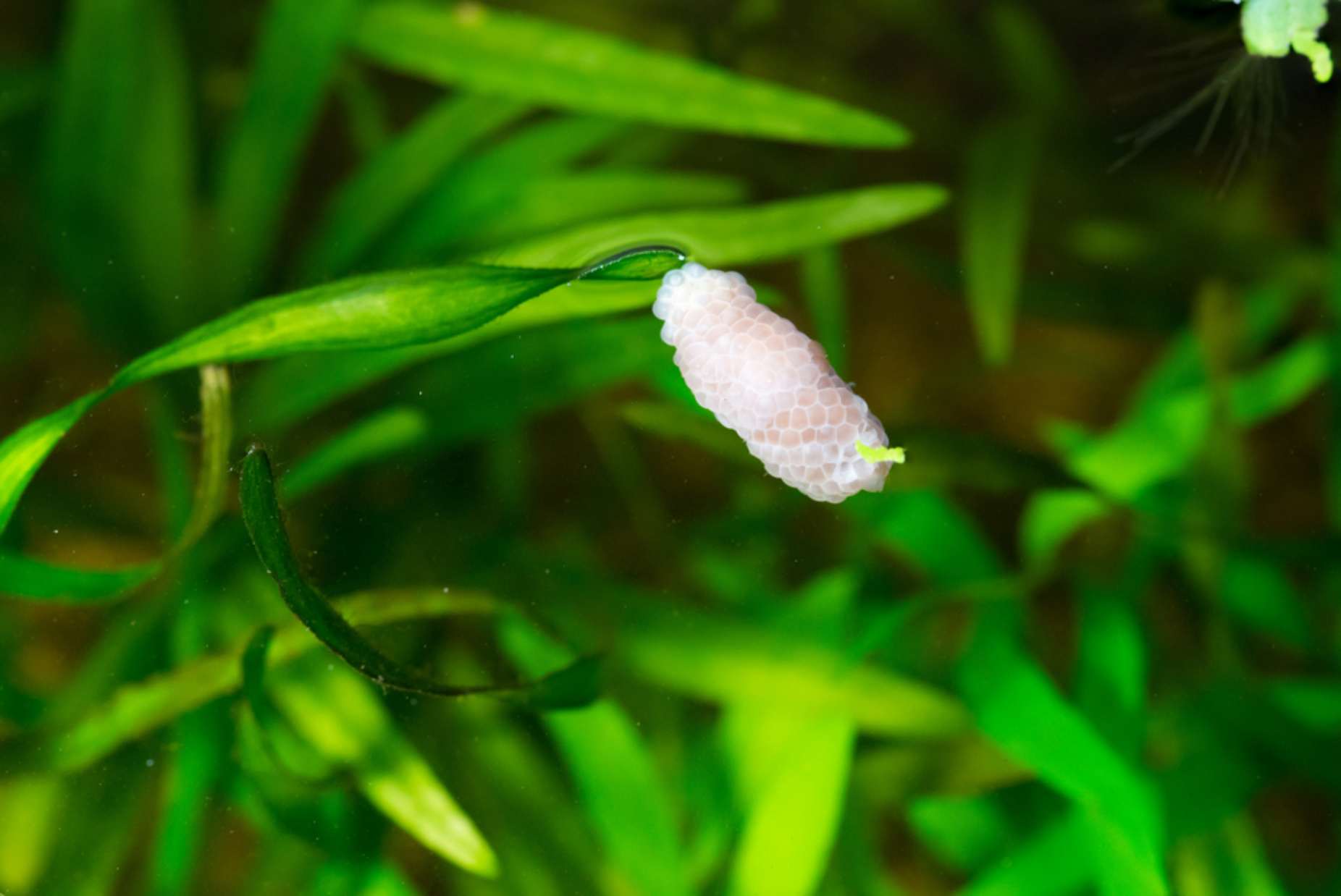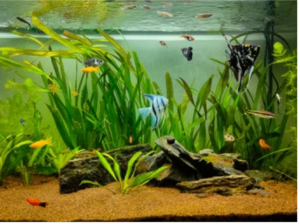For many aquarists, the allure of adding snails to their tanks comes with a pressing question: will I wake up to an unexpected snail boom? Delving into the world of freshwater aquariums, there’s a compelling mystery that has both beginners and experts scratching their heads: What snails don’t reproduce in these tranquil waters?
Snails that don’t reproduce in freshwater aquariums include Nerite snails. While they lay eggs in freshwater, their larvae, called ‘veligers,’ require brackish or saltwater to mature. Consequently, their eggs don’t successfully hatch and grow in freshwater environments, preventing overpopulation.
In the rest of this article, we’ll dive deeper into the fascinating world of snail reproduction, debunking myths and offering insights into a balanced aquarium ecosystem.
The Reproduction Myth: Nerite Snails
Recommended Reading: How Do Snails Reproduce? The Snail Love Story
Among the top contenders in this category are the Nerite snails. Originating from coastal areas where both freshwater and brackish conditions are common, these snails have garnered popularity in the aquatic pet market for their unique patterns, robust nature, and, more importantly, their seemingly non-reproductive behavior in freshwater tanks.
But what’s the real story behind the Nerite snail eggs we sometimes find in our tanks? Do they actually reproduce?
In truth, while Nerite snails do lay eggs even in freshwater tanks, their offspring face an almost insurmountable challenge. These eggs, tough and encased, contain hundreds of incredibly tiny eggs. When they hatch, they don’t immediately resemble the adult snails we’re accustomed to. Instead, these eggs release ‘veligers’ – a larval life form of snails.
Now, here’s where the intricacy of their reproductive cycle comes into play. These veligers require either brackish or fully saline conditions to mature. In the absence of such conditions, as is the case in freshwater tanks, these larvae perish within days.
Thus, while it appears as though the Nerite snails are reproducing due to the presence of eggs, they can’t successfully hatch and grow in a freshwater setting. It’s a reproductive process that’s both fascinating and a tad tragic, a stark reminder of the importance of natural habitats in the life cycle of many organisms.
For those keen on introducing non-reproducing snails to their aquariums, Polar Bear’s Pet Shop Nerite Snails offers a modern, vibrant mix of 5 Tiger and 5 Zebra snails, known for their effective algae-eating capabilities.
Popular Freshwater Snails & Their Reproductive Habits
When exploring the world of freshwater aquarium snails, besides the Nerite snails, another popular name that surfaces is the Mystery snails. Like Nerites, they, too, have their unique set of reproductive behaviors and quirks that differentiate them.
Mystery snails, unlike Nerites, have a more visible reproductive process. When conditions are right, and if you have both male and female snails, they reproduce, laying their eggs in clutches above the waterline. These egg clutches are distinct and relatively easy to spot, giving aquarists the advantage of removing them if they wish to control the snail population.
However, it’s essential to know that while Mystery snails do reproduce in freshwater tanks, their offspring are easily manageable due to this egg-laying behavior.
Comparatively, while Nerite snail eggs may appear as a sign of reproduction, they don’t lead to an overpopulated tank due to the reasons discussed earlier. Mystery snails, on the other hand, present a clear pathway from egg-laying to baby snails, but with the added benefit of easy population control.
Both these snails have their pros and cons, but understanding their reproductive habits can ensure that aquarists maintain the desired balance in their tanks without the unwelcome surprise of snail overpopulation.
Maintenance and Overpopulation Concerns
Having snails in an aquarium can be rewarding; they add diversity to the ecosystem and play crucial roles in maintaining its health. However, the task comes with its own set of responsibilities, and the top on that list is addressing the concerns related to snail overpopulation.
One crucial maintenance routine every aquarist should adopt is performing regular egg checks. Even if you have snails that don’t typically reproduce in freshwater, like Nerite snails, spotting their eggs helps you understand their well-being and behavior.
To ensure the well-being of your aquarium’s inhabitants, particularly when introducing new snails or fish, it’s essential to monitor nitrite levels. I highly recommend the API Nitrite Test Kit 180-Test, which is suitable for both freshwater and saltwater tanks. Not only does it provide accurate readings, but it’s a crucial tool to detect and prevent invisible water issues that could harm your aquatic pets.
For species that lay eggs above the waterline, like Mystery snails, regular checks enable you to control their population actively. However, managing these egg clutches brings its own ethical concerns.
The process of culling, which is the act of selective removal or handling of snail eggs to prevent overpopulation, can be emotionally challenging for some aquarists. While the very act of destroying unhatched eggs raises moral questions, the reality of an overpopulated tank and the resultant problems it causes necessitates it.
For many, the act of culling, especially when considering the broader health of the tank, becomes a necessary task, albeit a difficult one.
When it comes to ensuring the health of snails in your tank, observations are key. A healthy snail will be active, with its body fully inside its shell and its operculum (the snail’s “door”) closed tightly when it’s resting or threatened.
On the other hand, if you notice your snail floating for an extended period, staying motionless at the bottom, or notice a foul odor emanating from it, these are red flags indicating potential health issues.
Alternatives and Considerations
While Nerite snails and Mystery snails are popular choices, the world of freshwater snails offers a plethora of other species, some of which come with their own reproductive peculiarities. However, aquarists should be wary of potential look-alikes or species sold under misleading names that might reproduce uncontrollably in freshwater conditions.
When selecting snails, considering their reproductive habits is paramount. Some snails might seem attractive and beneficial initially but can quickly become a nuisance if they reproduce unchecked.
For instance, the common pond snail, often introduced inadvertently, reproduces rapidly and can overrun a tank. On the brighter side, if you’re leaning towards non-breeding aquatic companions, shrimps might be an alternative worth considering.
They can serve similar purposes in a tank, like algae control, without the concerns of overpopulation.
Key Takeaways
In the vast, intricate world of aquascaping, understanding the reproductive habits of your aquatic pets is not just a curiosity—it’s a necessity. A balanced tank is a symphony of various organisms working in harmony, and snail reproduction plays a crucial note in this melody.
Ultimately, the quest to find the perfect snail—one that balances aesthetics, functionality, and manageable reproduction—is a journey of understanding, patience, and love for the underwater world. With the right knowledge and care, every aquarist can create a healthy, controlled, and vibrant aquatic environment.



